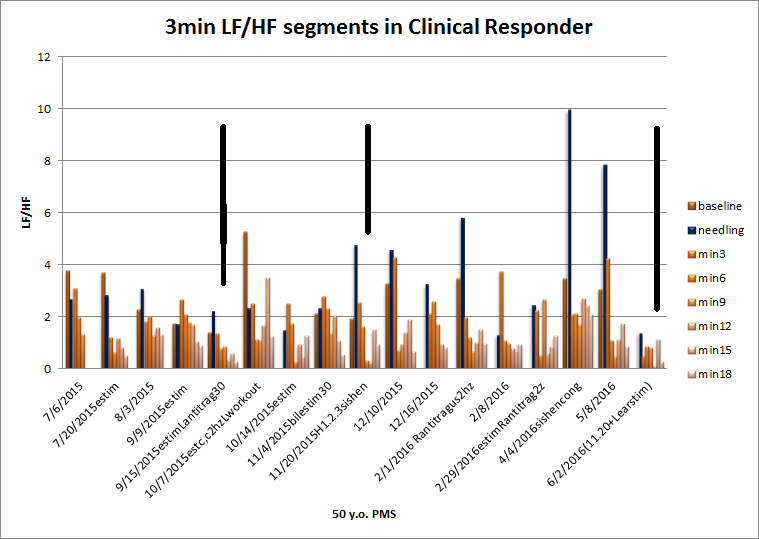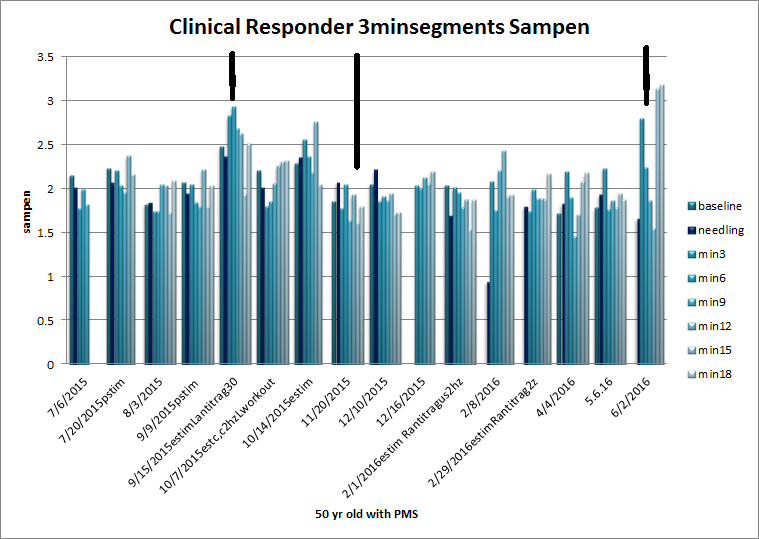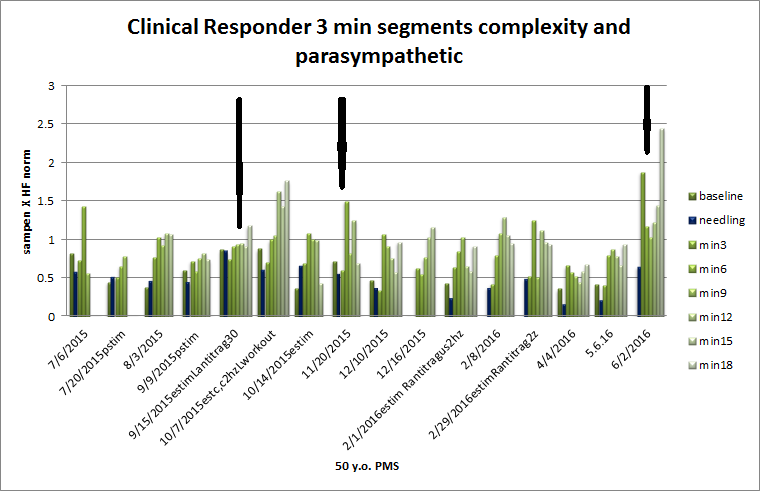

This is the current iteration of the protocol I’m working on. The goal is to get the most favorable increase in HRV during a treatment, which will then (in theory) translate into best clinical outcomes, stress reduction, better mood.
This treatment from 6.2.16 was a combination of the treatment from 11.20.15 and 9.15.15. I used the combination protocol since she had had good HRV response on both of these dates. The earstim used was 2Hz on the left, using a “wrap” type TENS pad in the cymba concha region. 6Pe.4Sp 3,2,1 li, 41GB,7pe, yintang 7He3CV4Cv Lots of needles, but she’s a robust sort and seems to respond well clinically and HRV with strong needling.
 Here you see the “stress response”, or overall autonomic balance. So looking at the treatments under the dark arrows, you see the marked decreased in LF/HF. this is what I was trying to duplicate. As you can see, it seemed to work and her stress levels dropped and stayed low.
Here you see the “stress response”, or overall autonomic balance. So looking at the treatments under the dark arrows, you see the marked decreased in LF/HF. this is what I was trying to duplicate. As you can see, it seemed to work and her stress levels dropped and stayed low.
 This data looks only at parasympathetic tone. The goal would be to have this increase as much as possible. Again, the treatment seemed to work.
This data looks only at parasympathetic tone. The goal would be to have this increase as much as possible. Again, the treatment seemed to work.
 This data looks at a complexity measurement, Samp En. This data you would like to see increase on the table. On 11.20.15, you don’t see much if any increase in complexity, but we do on 11.20.15 and 6.2.16. So this may be significant, that the estim helps with complexity as well as parasympathetic response.
This data looks at a complexity measurement, Samp En. This data you would like to see increase on the table. On 11.20.15, you don’t see much if any increase in complexity, but we do on 11.20.15 and 6.2.16. So this may be significant, that the estim helps with complexity as well as parasympathetic response.
 Finally, this is the latest addition to my protocol for evaluation. This measure looks at the product of complexity and parasympathetic activity. It is a more sensitive than specific measure, but at this point, it’s what I’m looking for.
Finally, this is the latest addition to my protocol for evaluation. This measure looks at the product of complexity and parasympathetic activity. It is a more sensitive than specific measure, but at this point, it’s what I’m looking for.

